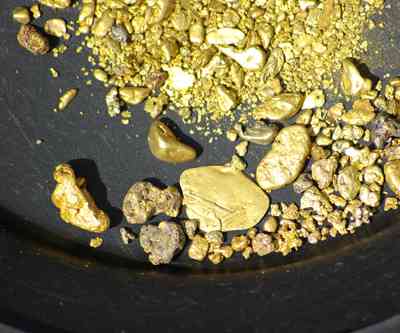Colombia backs eco-friendly gold production

Colombia hopes to achieve ecologically sound gold production by means of the Oro Verde (“Green Gold”, movement, which pays small-scale miners a significant premium for the adoption of environmentally friendly processing techniques.
The World reports that miners in the northern Colombian department of Choco have started to turn to a traditional African technique for the extraction of gold which employs natural materials in lieu of mercury.
Miners use balsa tree leaves to produce a soapy film when washing the gold in water. The film traps lighter minerals, effectively separating them from the heavier flakes of gold.
The traditional technique was handed down to small-scale miners in the region by their African forbears and enables them to forgo the use of mercury during the extraction process.
The use of mercury by small-scale miners has already inflicted a heavy environmental toll in some of Colombia’s key gold producing regions, leaving large swaths of jungle barren and contaminated while also damaging local water systems.
As part of the Green Gold movement groups such as UK-based Fairtrade and Fairmined are paying a premium of 15% to miners who employ environmentally friendly processes. Fairtrade and Fairmined have plans to introduce similar measures to other parts of Latin America, as well as Africa and Asia.
The movement faces considerable difficulty, however, with mercury-free gold mining requiring far greater time and effort in exchange for smaller profits, even when the generous premiums are included. So far only 1,400 miners in Colombia, Peru and Bolivia have signed up with the Oro Verde movement.
More News
First Quantum pulls back from arbitration on Panama copper mine
Signals potential for more negotiations with the nation over the Cobre Panama mine that’s been shuttered for more than a year.
March 31, 2025 | 04:30 pm
Freeport-McMoRan lowers first-quarter gold sales forecast
The company said it expects first-quarter gold sales to be roughly 100,000 ounces below its prior forecast of 225,000 ounces.
March 31, 2025 | 03:41 pm
{{ commodity.name }}
{{ post.title }}
{{ post.excerpt }}
{{ post.date }}



Comments